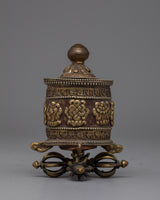
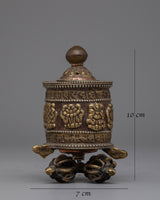
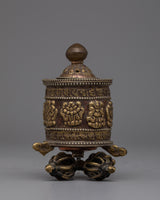
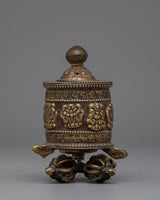
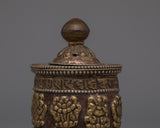
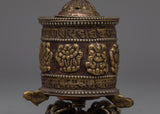
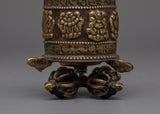
Buddhist Nepal Prayer Wheel | Enhance Your Mantra Practice with Authentic Craftsmanship

100% AUTHENTIC

HANDMADE

FREE SHIPPING
Buddhist Nepal Prayer Wheel
We present to you the Buddhist Nepal Prayer Wheel, an exquisitely created handiwork that embodies the impressive creativity of traditional Nepalese craftsmanship along with its profound spiritual legacy. This beautiful prayer wheel, which is crafted from brass and copper, has beautiful carved auspicious symbols that add to its spiritual and visual appeal. This prayer wheel is meant to uplift and inspire. It rests on a strong double vajra platform, which represents the stability of spiritual practice and the unbreakable essence of truth.
The Buddhist Nepal Prayer Wheel is perfect for collectors, art enthusiasts, and spiritual practitioners because it is a beautiful decorative item in addition to a practical spiritual tool. This prayer wheel inspires thoughtfulness and respect whether it is positioned in a meditation area, on a holy altar, or as a classy accent in any interior. Abundantly carved with lucky symbols, the exquisite brass and copper finish elevates it to a beloved addition to any collection or sacred space. This prayer wheel is a significant item that represents fine craftsmanship and deep spiritual values, besides being a pretty decoration.
Material: Copper, Brass

















